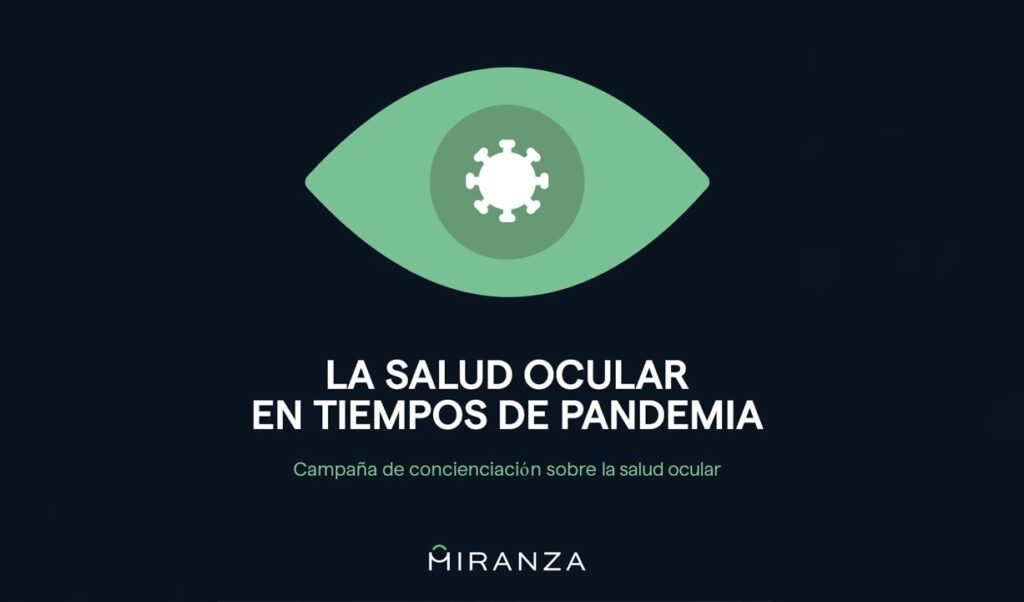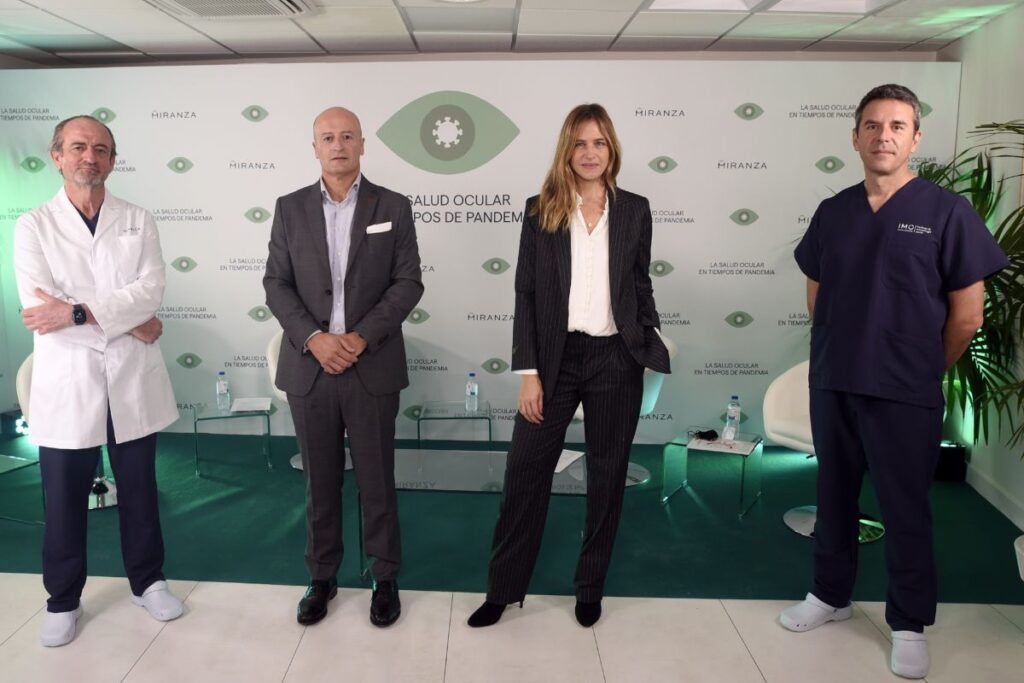
We present the first study on eye health during a pandemic
Our specialists and patients took part in the first study on “Eye health during a pandemic”, whose results we have presented at Miranza and which reveal worrying data on how the current situation caused by COVID-19 is impacting us. Here are the main conclusions we would like to highlight:
Alerting about the arrival of more serious cases at doctor’s offices
According to 55% of the ophthalmologists surveyed, more cases of patients with more advanced or severe complications are currently showing up at their offices than a year ago, which is mainly due to delayed eye check-ups in critical patients with chronic or degenerative diseases, such as AMD or glaucoma.
- The vast majority of experts consulted (91%) noted a delay in ophthalmic check-ups during lockdown due to the COVID-19 pandemic, whereas 43% of them believe that their eyesight had deteriorated.
- People’s fear of contagion (49%) and the restrictions imposed by the authorities (28%) are the two factors that have most impacted the decrease in eye examinations in recent months, according to our eye health study.
Increase in eye diseases during the pandemic
- According to 51% of eye health professionals, there has been an increase in some eye conditions over the past twelve months, including dry eye, AMD and myopia in children and young people.
- The main causes of this increase are the new habits of citizens during the pandemic (34%), as well as the lack of regular eye exams (16%) and the context of stress and uncertainty that society is currently experiencing (12%).

Intensive use of screens
By spending more time at home, the consumption of technological devices has increased. According to the eye health study, at least 8 out of 10 Spaniards regularly use a smartphone, TV and a computer or laptop, and on average spend 2 to 3 hours a day in front of a screen. Moreover, 2 out of 3 respondents stated that they have used these devices more during the pandemic.
- This increase in screen time leads ophthalmologists to warn of the risk of suffering from various eye diseases, such as eye strain (98%), followed by accommodative or convergence asthenopia (93%) and myopia (75%).
Children and adolescents are groups at risk, according to the eye health study
- According to 68% of the ophthalmologist asked, two groups of the population are most at risk of developing eye problems due to excessive use of these devices: children between the age of 3 and 12 and 13 to 18 year-old teens.
- However, despite concern over these data, around half of experts (46%) believe that there is insufficient evidence to state that overexposure to screens leads to the occurrence of eye problems associated with old age among very young people. However, 40% suspect it might be related, whereas only 13%confirmthis.
Experts recommend annual check-ups and prevention
- According to the Miranza study, although 30% of Spaniards admit that their visual problems have worsened since the start of the pandemic, most of them (75%) say they have not seen an ophthalmologist.
- Two thirds of the professionals surveyed (65%) believe that Spaniards are taking little care of their eye health during the pandemic. The vast majority (85%) believe that, despite the current pandemic, you should see an ophthalmologist at least once a year.
- Among the prevention tips for maintaining good eye health, experts highlight the importance of avoiding contact lens abuse (98%),having regular eye check-ups (99%) and reviewing one’s family history of eye disease (94%) in order to avoid possible problems.
